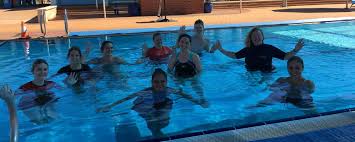
Aquatic education funding plays a crucial role in increasing access to water safety programs and ensuring that communities have qualified instructors. By supporting training, facility upgrades, and program availability, funding initiatives enhance public safety and make swimming education more accessible to people of all ages and backgrounds.
1. Expands Access to Swimming Programs
Funding for aquatic education often covers program fees, making swimming lessons more affordable for families. This expanded access ensures that more individuals, especially children, have the opportunity to learn essential water safety skills. Aquatic education funding makes it possible for communities to establish swimming programs in under-resourced areas, increasing access for people who might otherwise be unable to afford lessons.
2. Improves Instructor Training and Quality
Funding often supports the training and certification of swim instructors, which leads to higher-quality education. Certified instructors are equipped with up-to-date skills in water safety, rescue techniques, and effective teaching methods, creating a safer learning environment for participants. Well-funded training programs ensure that instructors can provide consistent, high-quality instruction across communities.
3. Enhances Public Safety and Drowning Prevention
A primary goal of aquatic education is to reduce water-related accidents and fatalities. Funding allows for comprehensive water safety programs that educate participants on critical skills, such as floating, safe pool entry, and emergency responses. By making these programs widely available, funding directly contributes to lowering the risk of drowning and promoting safe practices in and around water.
4. Supports Facility Improvements
In addition to program funding, grants and other financial resources can help improve aquatic facilities, ensuring they meet safety standards and provide a quality environment for learning. Facility upgrades may include better safety equipment, updated pool maintenance, and accessibility features, making programs more inclusive and enjoyable for all participants.
5. Provides Opportunities for Diverse and Inclusive Programs
Funding enables swim programs to serve diverse populations, including individuals with disabilities, the elderly, and communities with limited resources. By providing tailored programs that meet a variety of needs, funded opportunities foster inclusivity and ensure that everyone has the chance to learn water safety skills in a comfortable, supportive setting.
Conclusion
Aquatic education funding is a valuable resource for communities, enabling wider access to swimming programs and supporting quality instruction. By investing in aquatic education, funding initiatives promote water safety, reduce drowning risks, and contribute to the well-being of all participants, creating safer, more connected communities.
